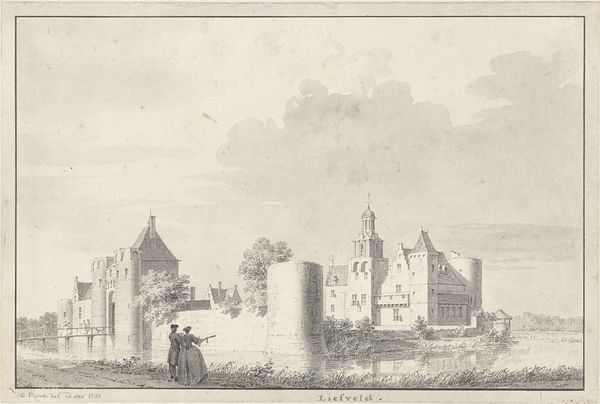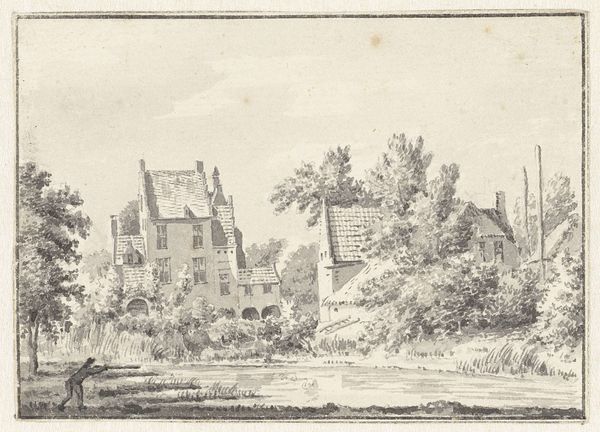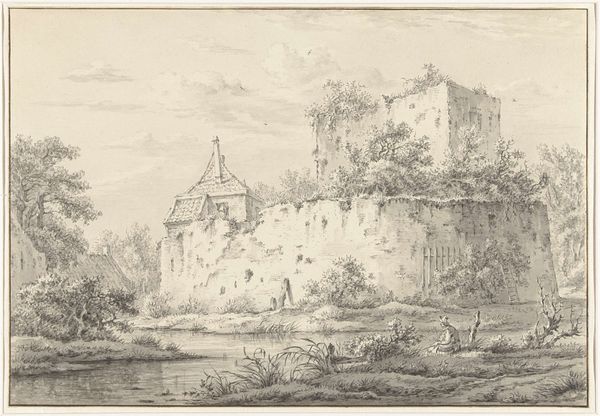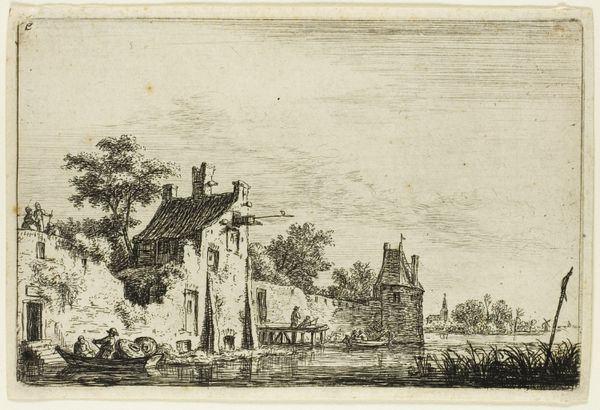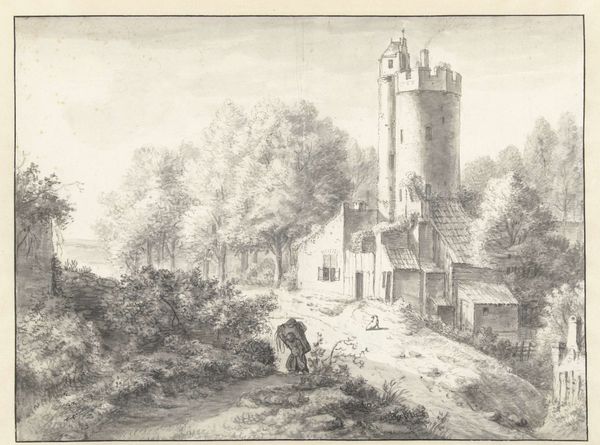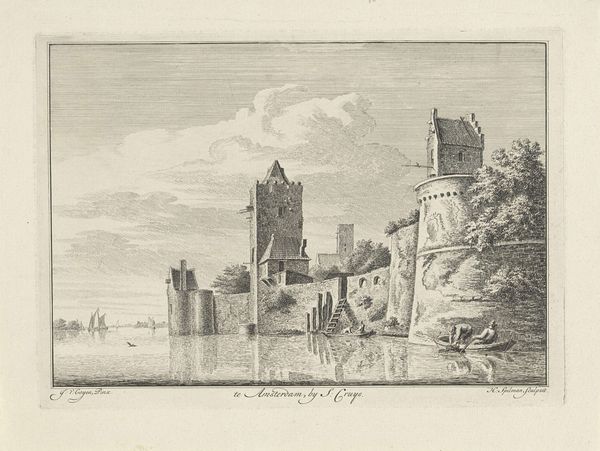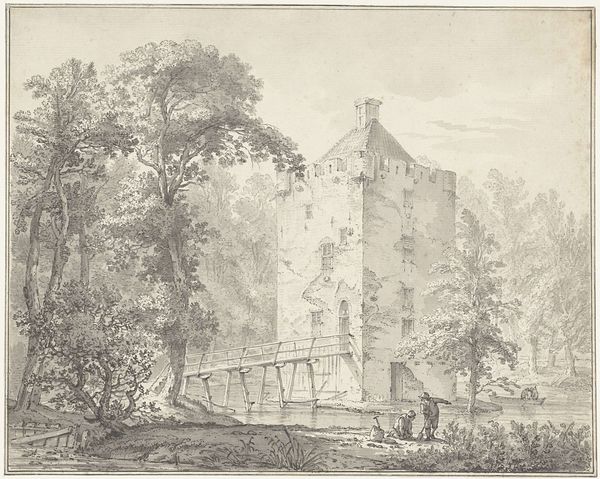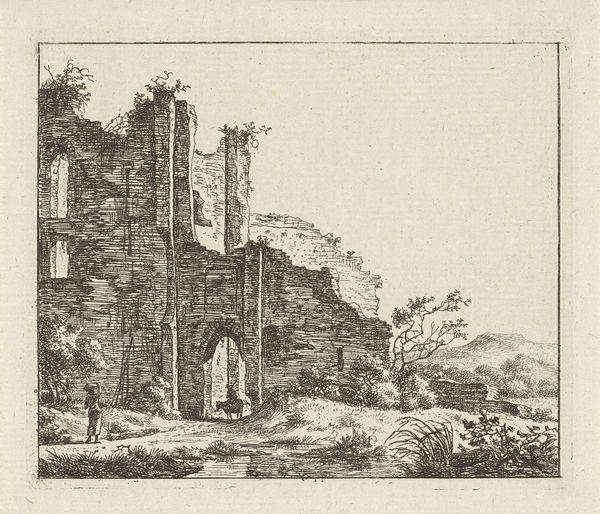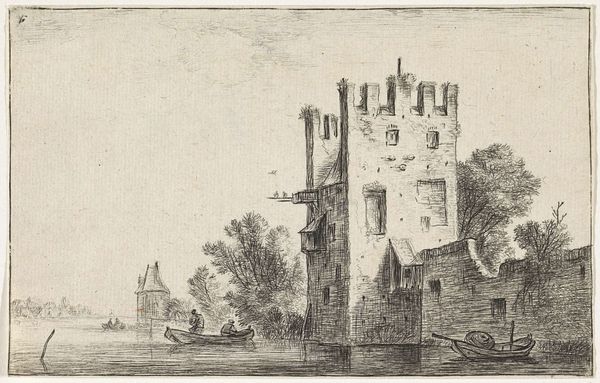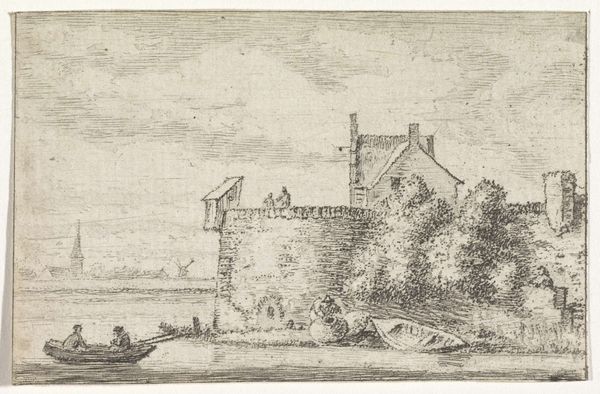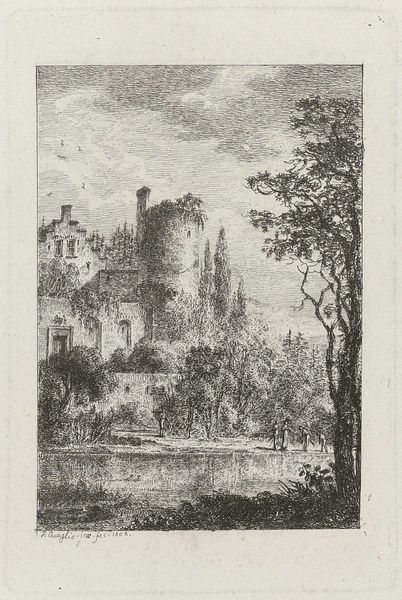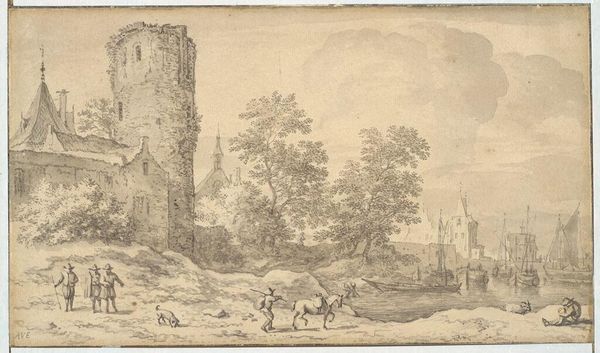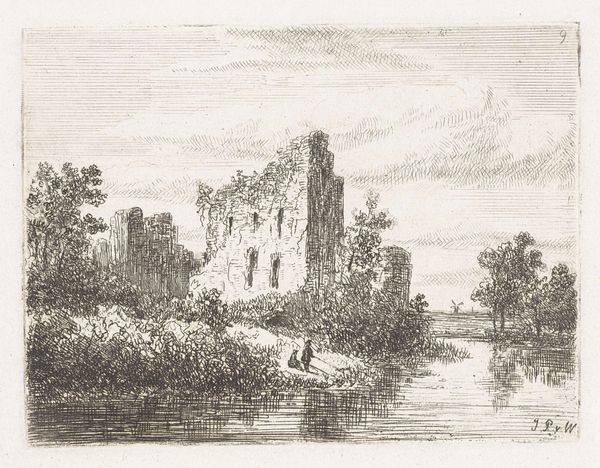
drawing, paper, ink
#
drawing
#
landscape
#
paper
#
ink
#
romanticism
#
cityscape
#
genre-painting
Dimensions: height 250 mm, width 362 mm
Copyright: Rijks Museum: Open Domain
Carel Lodewijk Hansen made this drawing of the Ruïne van Slot Teylingen bij Sassenheim using pen in gray on paper. Notice how the ruined castle dominates the composition, a potent symbol of decay and the transience of human endeavor. This ruin motif, a memento mori, echoes through art history. Recall the crumbling structures in Piranesi's etchings or even the Romantic landscapes of Caspar David Friedrich. The ruin speaks to our subconscious anxieties about time and oblivion. Consider how the ruin, once a symbol of power, is now being reclaimed by nature. This cyclical return to the earth reflects a deeper, almost Jungian, archetype of death and rebirth. The very stones whisper tales of bygone eras, engaging us in a dialogue between past and present, stirring a melancholic awareness of time’s relentless march. The ruin in art is not merely a depiction of physical decay, but a powerful emotional and psychological symbol, continuously reappearing, evolving, and taking on new meanings through the ages.
Comments
No comments
Be the first to comment and join the conversation on the ultimate creative platform.
